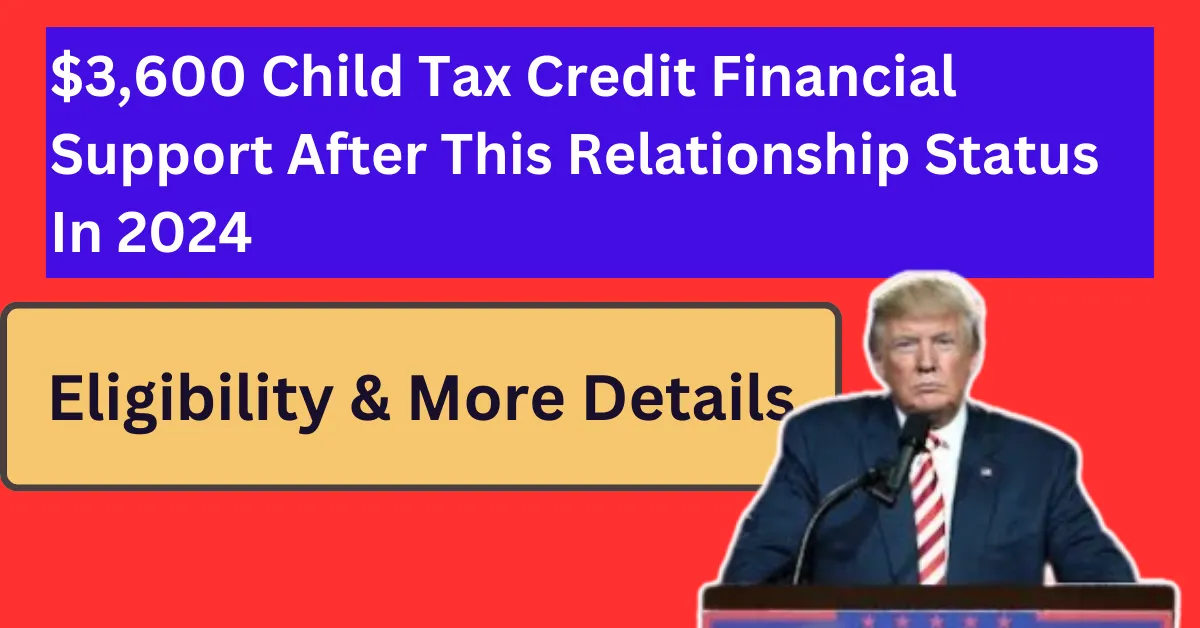The Child Tax Credit (CTC) remains one of the most valuable tax benefits for families in the United States. Administered by the IRS, this credit offers up to $3,600 per eligible child, helping to ease the financial strain on households.
If you’re looking to maximize this benefit during the upcoming tax season, here’s everything you need to know about eligibility, filing requirements, and additional tax credits you might claim.
What Is the Child Tax Credit?
The Child Tax Credit is designed to reduce the tax burden on families and, in some cases, provide a direct refund. Depending on your financial situation, you may qualify for the maximum $3,600 per child or a reduced amount.
Your eligibility depends largely on your Adjusted Gross Income (AGI) and other key criteria.
Families with an AGI below $200,000 for single filers or $400,000 for joint filers can qualify for the full amount. However, for every $1,000 earned above these thresholds, the credit reduces by $50.
Eligibility Requirements
To claim the Child Tax Credit, certain conditions must be met:
- Dependency: The child must be listed as a dependent on your tax return.
- Residence: The child must have lived with you for at least six months during the tax year.
- Financial Support: You must have provided more than 50% of the child’s financial support.
- Social Security Number (SSN): The child must have a valid SSN.
- Relationship: The child must be a biological child, stepchild, sibling, grandchild, or similarly direct relative.
How to File for the Credit
The IRS recommends filing electronically and using direct deposit for faster processing. Filing electronically minimizes errors and ensures quicker refunds, typically within 21 days. Here’s a step-by-step guide to claiming the Child Tax Credit:
- Gather Required Documents: Ensure you have your child’s SSN, your income statements (W-2 or 1099 forms), and receipts for any childcare or education expenses.
- Use IRS Tools: The IRS provides online calculators to help determine your eligibility and estimate your credit amount.
- File Early: The tax season begins in January, so filing promptly ensures a faster refund.
Key Payment Dates
If you’re eligible, the Child Tax Credit will be included in your annual tax refund. Families filing in January may see their refunds-including the credit-processed and deposited by February, provided there are no errors or delays.
Also Read- SSI Payment Of Up To $943 For Essential Caregivers In December 2024: Know Eligibility & More Details
The Child Tax Credit isn’t the only benefit available to parents. Families should explore other tax credits, such as:
- Earned Income Tax Credit (EITC): Designed for low- to moderate-income workers, this credit can add thousands to your refund.
- Child and Dependent Care Credit: Covers costs for childcare, after-school programs, or in-home care.
- Recovery Rebate Credit: Provides up to $1,400 for dependents added to your household in the previous tax year, such as through birth or adoption.
Maximizing Your Tax Benefits
To optimize your deductions and credits:
- Keep Detailed Records: Maintain documentation for expenses related to child care, education, and medical needs.
- Stay Updated: Tax laws and thresholds change annually. The IRS typically releases updates at the start of tax season, so keep an eye on new developments.
- Consult a Tax Professional: An expert can help identify deductions and credits you might overlook.
Filing Accurately
Errors on your tax return can delay your refund, so double-check all information, including your child’s SSN and your income details. Filing a complete and accurate return ensures you receive the maximum credit and avoid unnecessary delays.
By understanding the Child Tax Credit and related benefits, families can significantly ease financial pressures and make the most of the available tax relief programs.
